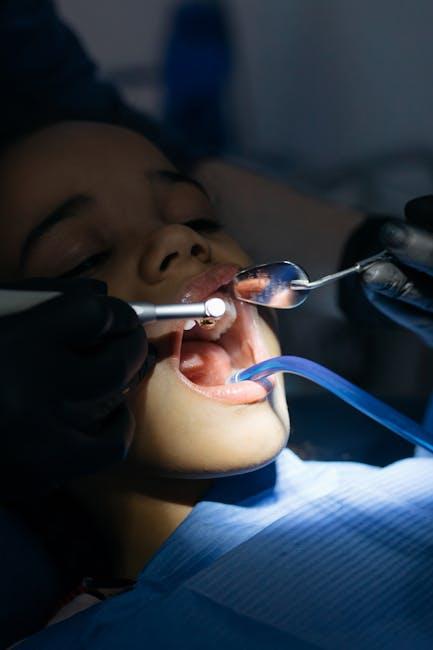1 in 3 Kids Has Dental Problems, Poll Finds – U.S. News & World Report
Recent studies have highlighted a concerning oral health issue affecting children across the United States. According to a detailed poll reported by U.S. News & World Report, one in three kids currently suffers from dental problems. This alarming statistic shines a spotlight on the growing dental health crisis among children and the urgent need for preventive care and education.
The Shocking Statistics Behind Kids’ Dental Health
The poll surveyed a representative sample of parents and guardians across diverse demographics, revealing critical insights into the prevalence of dental problems in children. These problems range from cavities and tooth decay to gum diseases and other oral infections that can severely impact a child’s overall health and quality of life.
| Age Group | Percentage with Dental Problems | Most Common Issues |
|---|---|---|
| 2-5 years | 28% | Early childhood cavities |
| 6-12 years | 35% | Tooth decay, gum inflammation |
| 13-17 years | 33% | Orthodontic issues, cavities |
These figures underscore the magnitude of dental health issues, notably during critical developmental years. Kids are vulnerable to both physiological risks and preventable habits that can cause lasting damage.
Why Are Dental Problems So Common Among Children?
Several factors contribute to the high prevalence of dental issues in children, including:
- Poor oral hygiene: Irregular brushing and flossing can rapidly escalate into cavities and plaque buildup.
- High sugar consumption: Sugary snacks and beverages fuel bacteria that cause tooth decay.
- Lack of dental visits: Many children miss regular check-ups, delaying diagnosis and treatment.
- Socioeconomic barriers: Limited access to dental care, especially for low-income families, worsens conditions.
- Limited awareness: Parents and caregivers sometimes underestimate the importance of early oral health care.
The Benefits of Early Dental Care for Kids
Addressing dental problems early can enhance children’s overall well-being and reduce long-term health complications. Some key benefits of proactive dental care include:
- Reduced pain and discomfort: Prevents toothaches and oral infections that affect eating and sleeping.
- Better speech and eating habits: Healthy teeth are essential for clear speech and proper nutrition.
- Improved self-confidence: A bright smile enhances social interactions and self-esteem.
- Prevention of costly treatments: Early care limits the need for orthodontics, root canals, or extractions later.
Practical Tips to Prevent Dental Problems in Children
Parents and caregivers can take several effective steps to reduce the risk of dental issues in their kids:
- Establish a consistent brushing routine: Encourage brushing twice daily with fluoride toothpaste.
- Floss regularly: Teach children flossing techniques as soon as two teeth touch.
- Limit sugary snacks and drinks: Prioritize fresh fruits, vegetables, and water over candy and soda.
- Schedule regular dental visits: Aim for dental check-ups twice a year or as recommended by a dentist.
- Use dental sealants: Consult with your dentist on sealants to protect teeth from decay.
- Lead by example: Demonstrate good oral care habits that kids can emulate.
Case Study: Successful Intervention Improves A Child’s Dental Health
Emily, an 8-year-old from Ohio, struggled with recurrent cavities and discomfort. Her parents, after learning about the widespread dental issues among kids, initiated a structured dental care plan:
- Bi-annual dental check-ups with fluoride treatments.
- Limiting sugary snacks and replacing juice with water.
- Supervised brushing twice daily with a timer to ensure effectiveness.
Within six months, Emily showed significant improvement: her cavities stabilized, she reported less pain, and her dental hygiene became a routine she enjoyed. This case reinforces that with awareness and effort, most dental issues can be prevented or controlled.
When to See a Dentist for Your Child’s Dental Problems
Parents should seek professional dental care promptly if their child exhibits any of the following signs:
- Persistent tooth pain or sensitivity
- Visible holes or black spots on teeth
- Swollen or bleeding gums
- Difficulty chewing or biting
- Bad breath that persists despite brushing
Early intervention can save your child from discomfort and protect their oral health for the future.
Conclusion: Prioritize Children’s Oral Health to Prevent Epidemic Levels of Dental Problems
The poll revealing that 1 in 3 kids in the U.S. suffers from dental problems is a wake-up call for parents, educators, and healthcare providers alike. Good oral health is foundational not only for a confident smile but also for overall well-being. By adopting practical prevention strategies, ensuring regular dental check-ups, and fostering healthy habits early on, we can turn the tide against this silent epidemic. Investing in children’s dental health today paves the way for a healthier, happier tomorrow.
For more expert advice, oral care tips, and updates on children’s health, stay tuned to trusted sources like U.S. News & World Report and consult your local dental professionals regularly.


